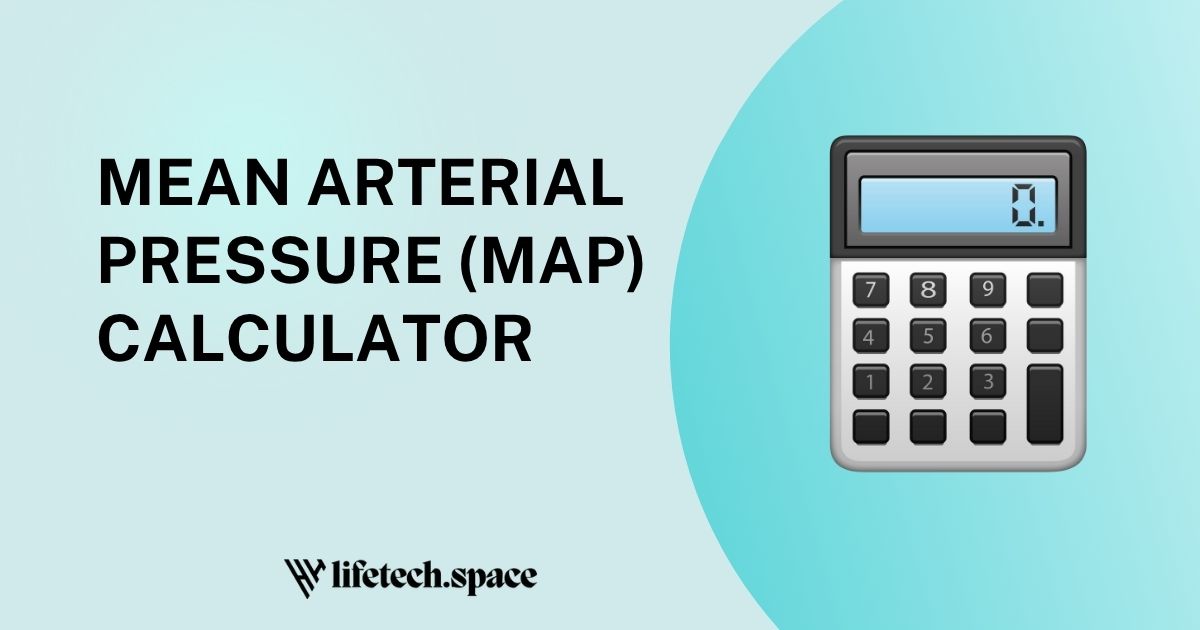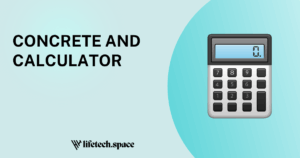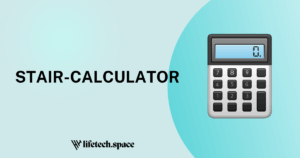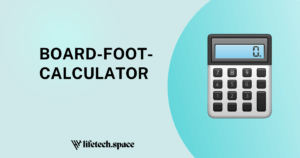Understanding the MAP Calculator: Your Guide to Mean Arterial Pressure
Introduction to the MAP Calculator
Have you ever wondered how doctors get a deeper look at your blood pressure beyond the usual numbers? That’s where the MAP calculator comes in—a powerful tool that calculates mean arterial pressure (MAP), giving you a clearer picture of your heart health. Unlike standard blood pressure readings, MAP shows the average pressure in your arteries during a heartbeat cycle. Whether you’re a healthcare professional, a patient managing a condition, or just curious about your cardiovascular wellness, the MAP calculator is a game-changer. In this guide, we’ll explore what a MAP calculator is, why it’s important, how to use it, and its role in both medical and everyday settings. Let’s dive in and unlock the secrets of mean arterial pressure!
What Is a MAP Calculator?
Defining Mean Arterial Pressure
Mean arterial pressure, or MAP, is the average pressure in your arteries during one complete heartbeat cycle. It’s a key indicator of how well your organs—like your heart, brain, and kidneys—are receiving blood flow. A MAP calculator simplifies the process of finding this value by using your systolic and diastolic blood pressure readings.
How Does a MAP Calculator Work?
A MAP calculator uses a simple formula to compute mean arterial pressure based on two inputs: systolic blood pressure (SBP) and diastolic blood pressure (DBP). The standard formula is:
MAP = DBP + 1/3 (SBP – DBP)
Here’s what those terms mean:
- Systolic Blood Pressure (SBP): The pressure in your arteries when your heart pumps blood.
- Diastolic Blood Pressure (DBP): The pressure when your heart rests between beats.
For example, if your blood pressure is 120/80 mmHg, the calculation would be:
MAP = 80 + 1/3 (120 – 80) = 80 + 13.33 = 93.33 mmHg
A MAP calculator automates this math, making it quick and error-free.
Why Is the MAP Calculator Important?
The Role of MAP in Health Monitoring
Mean arterial pressure is a vital sign that shows how effectively blood is reaching your organs. A healthy MAP ensures your body gets enough oxygen and nutrients. Here’s why the MAP calculator is so valuable:
- Guides Treatment: Doctors use MAP to adjust medications for conditions like high blood pressure or shock.
- Monitors Critical Conditions: In intensive care units (ICUs), MAP helps track patients with serious illnesses.
- Predicts Health Risks: Abnormal MAP values can signal risks like organ damage or heart issues.
Who Uses a MAP Calculator?
The MAP calculator isn’t just for medical professionals. It’s used by:
- Healthcare Providers: Nurses, paramedics, and doctors rely on MAP for quick assessments.
- Patients: People with hypertension or heart conditions can monitor their health at home.
- Fitness Enthusiasts: Athletes use MAP to optimize performance and recovery.
How to Use a MAP Calculator Effectively
Step-by-Step Guide to Using a MAP Calculator
Using a MAP calculator is easy. Follow these steps:
- Measure Your Blood Pressure: Use a reliable blood pressure monitor to get your systolic and diastolic readings.
- Input Values: Enter the SBP and DBP into an online MAP calculator or app.
- Calculate MAP: The tool will instantly compute your mean arterial pressure.
- Interpret Results: Compare your MAP to the normal range (70–100 mmHg for most adults).
- Consult a Doctor: If your MAP is too high or low, seek medical advice.
Tools and Apps for MAP Calculation
You can find free MAP calculators online or as mobile apps. Some popular options include:
- MDCalc: A trusted tool for medical professionals.
- Omni Calculator: Simple and user-friendly for everyone.
- Health Apps: Apps like MyHeart or Blood Pressure Monitor often include MAP features.
Tips for Accurate MAP Readings
To get reliable results from your MAP calculator, follow these tips:
- Measure blood pressure at the same time each day.
- Rest for 5 minutes before taking a reading.
- Avoid caffeine or exercise 30 minutes before measuring.
- Use a properly calibrated blood pressure monitor.
Benefits and Limitations of Using a MAP Calculator
Pros of Using a MAP Calculator
- Accuracy: Delivers precise arterial pressure measurements.
- Ease of Use: Simple to input data and get instant results.
- Health Insights: Detects issues like low perfusion or high blood pressure early.
- Accessibility: Free tools are widely available online.
- Supports Decision-Making: Helps doctors make informed choices in critical care.
Cons of Using a MAP Calculator
- Requires Accurate Inputs: Incorrect blood pressure readings lead to faulty MAP results.
- Not a Diagnosis Tool: MAP is one piece of the puzzle, not a full diagnosis.
- Limited for Non-Medical Users: Patients may misinterpret results without guidance.
- Device Dependency: You need a reliable blood pressure monitor.
Understanding MAP Ranges: What’s Normal?
Healthy MAP Ranges
A normal MAP range is typically 70–100 mmHg. Here’s what different ranges mean:
- Below 60 mmHg: May indicate poor organ perfusion, common in shock or low blood pressure.
- 60–70 mmHg: Acceptable in some cases but needs monitoring.
- Above 100 mmHg: Suggests high blood pressure, increasing risks of heart strain.
Factors Affecting MAP
Several factors can influence your MAP:
- Age: MAP may rise slightly with age due to stiffer arteries.
- Fitness Level: Athletes often have lower resting MAP due to better heart efficiency.
- Medications: Blood pressure drugs can alter MAP.
- Health Conditions: Diabetes, kidney disease, or heart failure can affect MAP.
Frequently Asked Questions About MAP Calculators
What is a MAP calculator used for?
A MAP calculator determines mean arterial pressure, which measures average artery pressure. It’s used to assess blood flow to organs and guide medical treatment.
How accurate is a MAP calculator?
A MAP calculator is highly accurate if you provide correct systolic and diastolic readings. Always use a calibrated blood pressure monitor for reliable results.
Can I use a MAP calculator at home?
Yes! A MAP calculator is user-friendly and available online or via apps. It’s great for patients with hypertension or heart conditions to monitor their health.
What is a dangerous MAP value?
A MAP below 60 mmHg or above 100 mmHg can be concerning. Low MAP may indicate poor blood flow, while high MAP suggests hypertension. Consult a doctor if your MAP is abnormal.
How often should I use a MAP calculator?
Healthy individuals can check MAP occasionally. Those with heart conditions or on blood pressure medication should use a MAP calculator as advised by their doctor, often daily or weekly.
Is a MAP calculator the same as a blood pressure monitor?
No. A MAP calculator computes mean arterial pressure using blood pressure readings, while a blood pressure monitor directly measures systolic and diastolic pressures.
MAP Calculator in Medical Settings
MAP in Critical Care
In hospitals, especially ICUs, the MAP calculator is critical. It helps doctors:
- Monitor patients in shock or sepsis.
- Adjust IV fluids or medications to maintain healthy MAP.
- Prevent organ failure by ensuring proper blood flow.
MAP and Chronic Conditions
For patients with chronic illnesses like hypertension or kidney disease, regular MAP monitoring can:
- Track how well treatments are working.
- Detect early signs of complications.
- Guide lifestyle changes, like diet or exercise.
How MAP Calculators Fit Into Everyday Life
For Patients with Hypertension
If you have high blood pressure, a MAP calculator can show how well your treatment is working. Regular MAP checks help ensure your arterial pressure stays in a safe range.
For Fitness and Wellness
Athletes and fitness enthusiasts use MAP calculators to optimize training. A lower resting MAP often signals better heart health, while spikes during exercise can indicate overexertion.
Integrating MAP Calculators with Wearables
Modern wearables, like smartwatches, often include blood pressure monitoring. Some even integrate MAP calculators, allowing real-time tracking of arterial pressure during workouts or daily tasks.
Common Mistakes to Avoid with MAP Calculators
To get the most out of your MAP calculator, avoid these errors:
- Using Faulty Equipment: Ensure your blood pressure monitor is accurate.
- Misinterpreting Results: Discuss abnormal MAP values with a doctor.
- Inconsistent Measurements: Take readings under similar conditions for reliable data.
- Ignoring Context: MAP is just one metric; consider it alongside other health data.
The Future of MAP Calculators
As technology evolves, MAP calculators are becoming more accessible. Future trends may include:
- AI Integration: Smarter algorithms to predict health risks based on MAP trends.
- Wearable Enhancements: More devices with built-in MAP calculators for real-time tracking.
- Personalized Health Plans: Apps that use MAP data to suggest diet, exercise, or medication changes.
Conclusion: Take Control with a MAP Calculator
The MAP calculator is a simple yet powerful tool for understanding your cardiovascular health. By calculating mean arterial pressure, it reveals how well your organs are receiving blood, helping you and your doctor make informed decisions. Whether you’re managing a chronic condition, optimizing fitness, or staying proactive about your health, a MAP calculator is your ally. Start using one today to track your MAP and take charge of your well-being. Visit trusted platforms like MDCalc or download a health app to get started. Your heart will thank you!
Call to Action: Try a MAP calculator now! Measure your blood pressure, input the values, and discover your mean arterial pressure. Share this guide with others to spread the word about this essential health tool!





